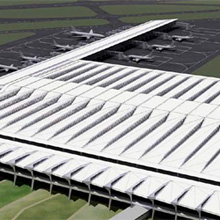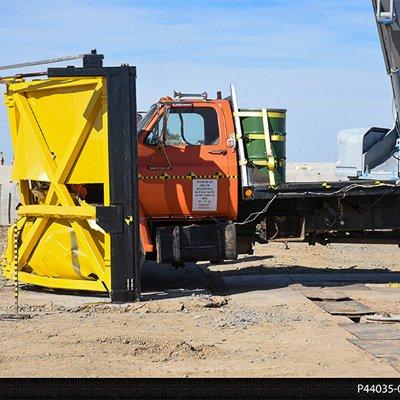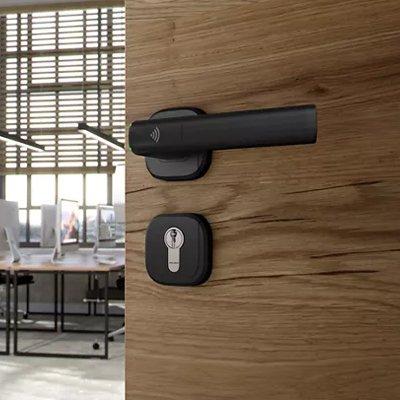 |
| Over 3500 CEM IP card readers were installed throughout the terminal |
As part of a $2.6 billion, 20 year phased development program, Delhi International Airport Ltd (DIAL) added an additional passenger terminal building (Terminal 3) to Indira Gandhi Airport. The Terminal 3 site spans 500,000m2 and features more than 160 check-in counters with a capacity of 34 million passengers per annum.
To secure Terminal 3, DIAL and BCAS (Bureau of Civil Aviation Security India) required a proven access control solution which could utilise IP technology and be fully integrated with other systems in the terminal. The aim of the project was to deliver a flagship airport solution for India.
"The Indira Gandhi Terminal 3 project represents a landmark development in the aviation sector within India and both ADT India and CEM Systems are delighted to be involved." said Ramesh Jayaraman, Managing Director, ADT India.
Employing over 130 engineers onsite ADT India installed the industry leading CEM AC2000 system to secure the Terminal. The system offers a fully integrated IP based access control and video solution.
System integration
The AC2000 system installed at Indira Gandhi has been integrated with several other sub-systems to provide a central SMS (security management system) providing the client with one user-friendly command and control graphical interface. Using the CEM AC2000 AED (Alarm Event Display) application, AC2000 can manage IndigoVision NVR alarms from 2600 cameras with video analytics from the common front end. This means that when an alarm is triggered on the access control system, an administrator can simply view both live and recorded video footage. All of the systems will be monitored via the AC2000 AED application.
IP card readers
Over 3500 CEM IP card readers were installed throughout the terminal, making the installation one of the biggest IP based access control systems in the region. CEM S610e IP card readers utilised existing Ethernet connectivity installed at the airport. These readers feature a large internal database for offline card validation ensuring zero system downtime. The reader also comes with a graphical LCD display, which allows meaningful messages such as 'Card Expiring' and 'Wrong TimeZone' to be displayed to airport cardholders.
In addition to securing doors, S610e readers have also been used to secure 74 Passenger Boarding Bridges at Terminal 3. Before an 'air-bridge' can be activated, a valid card must be swiped on an S610e card reader to enable the controls. As cabling had to be kept to a minimum at Airbridges, the CEM readers were powered using Power over Ethernet (PoE) technology.
S610e readers also control 168 check-in desks at the airport. Desks are enabled by utilising 'Equipment Enable' door mode on the S610e reader. This offers the benefit of allowing the airport to report on the usage of check-in desks by each airline.
"The Indira Gandhi Terminal 3 project represents a landmark development in the aviation sector within India and both ADT India and CEM Systems are delighted to be involved" |
Door modes
A Passenger mode on the S610e readers will allow efficient use of Gaterooms where by airline staff can put a door into 'Passenger Mode' with extended door open time for arriving or departing passengers.
To secure equipment rooms and critical points on the Airside/Landside boundary, Delhi Airport chose the CEM S610f fingerprint readers. This provides highly sensitive areas with three layers of security – PIN, Card and Biometric verification. Fingerprint templates are captured at the same time as ID cardholders are enrolled on the system.
Portable access control
The airport has also opted for CEM's industry leading S3020 Portable Readers. These handheld units are designed for ID card validation at remote sites or temporary entrances which have no power and will be used to monitor staff movements and non-access controlled points along the Airside/Landside boundary.
AC2000 software
In addition to the AC2000 AED application, the AC2000 system features a number of operational applications that will benefit the airport. AC2000 VIPPS (Visual Imaging and Pass Production System) allows security personnel in the ID unit to capture personnel image s, logos and signatures and incorporate these into professionally designed passes. The Terminal 3 installation features five enrolment stations, allowing multiple users to be enrolled at any one time.
Offering a fully integrated biometric access control solution, the enrolment stations can also be used to capture fingerprint biometrics when cardholder profiles are being originally setup.
AC2000 also offers Delhi Airport Terminal 3 a host of other management applications including 'Visitor Management', 'Time & Attendance' and 'Vehicle Management'.


















